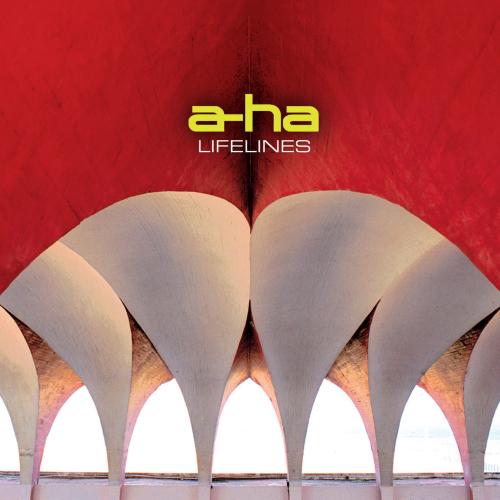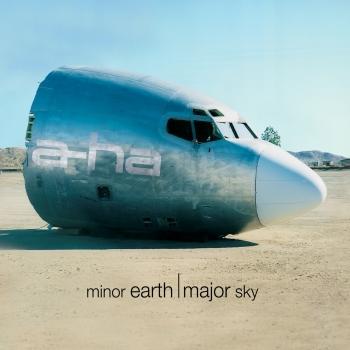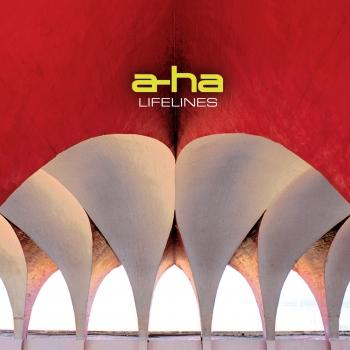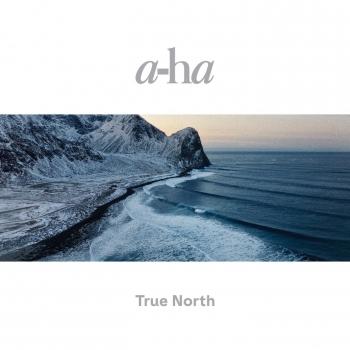
Lifelines Deluxe Edition (Remastered) a-ha
Album info
Album-Release:
2002
HRA-Release:
27.09.2019
Album including Album cover
I`m sorry!
Dear HIGHRESAUDIO Visitor,
due to territorial constraints and also different releases dates in each country you currently can`t purchase this album. We are updating our release dates twice a week. So, please feel free to check from time-to-time, if the album is available for your country.
We suggest, that you bookmark the album and use our Short List function.
Thank you for your understanding and patience.
Yours sincerely, HIGHRESAUDIO
- 1 Lifelines (2019 Remaster) 04:16
- 2 You Wanted More (2019 Remaster) 03:40
- 3 Forever Not Yours (2019 Remaster) 04:05
- 4 There's a Reason for It (2019 Remaster) 04:22
- 5 Time and Again (2019 Remaster) 05:03
- 6 Did Anyone Approach You (2019 Remaster) 04:11
- 7 Afternoon High (2019 Remaster) 04:30
- 8 Oranges on Appletrees (2019 Remaster) 04:15
- 9 A Little Bit (2019 Remaster) 04:11
- 10 Less Than Pure (2019 Remaster) 04:11
- 11 Turn The Lights Down (2019 Remaster) 04:17
- 12 Cannot Hide (2019 Remaster) 03:16
- 13 White Canvas (2019 Remaster) 03:26
- 14 Dragonfly (2019 Remaster) 03:20
- 15 Solace (2019 Remaster) 04:19
- 16 Did Anyone Approach You (Tore Johanson Mix) 05:56
- 17 Time and Again (Langer & Wainstanley Version) 05:47
- 18 Lifelines (Apoptyma Berzerk Remix) 06:24
- 19 Lifelines (Demo) 05:16
- 20 You Wanted More (Demo) 04:01
- 21 Forever Not Yours (Demo) 04:12
- 22 There's a Reason for It (Demo) 04:13
- 23 The Breakers 03:25
- 24 Time and Again (Demo) 05:11
- 25 Did Anyone Approach You (Demo) 04:01
- 26 Afternoon High (Demo) 04:39
- 27 Oranges on Appletrees (Early Mix) 03:59
- 28 Sole Survivor 04:07
- 29 Less Than Pure (Demo) 04:18
- 30 To Show It is to Blow It 04:10
- 31 Turn The Lights Down (Demo) 04:00
- 32 Cannot Hide (Demo) 03:14
- 33 There's a Reason for It (A Break in the Clouds) 04:14
- 34 One in a Million (Demo) 02:45
- 35 Dragonfly (Demo) 03:32
- 36 Solace (Early Version) 04:12
- 37 Differences (Demo) 02:47
Info for Lifelines Deluxe Edition (Remastered)
The Second Reunion Album from the Norwegian Trio Picks Up Where 'minor Earth, Major Sky' Left Off. Once Again, They Tug at the Heartstrings and Produce Some of the Most Beautiful Music on Earth.
a-ha kept their promises with Lifelines, their 2002 follow up album to Minor Earth | Major Sky, proving they were back and brilliant as ever, if not even better. Time had moved on, things had grown: Magne Furuholmen was working with visual arts as well as music, Pål Waaktaar-Savoy’s Band Savoy had released their fourth album Reasons to Stay Indoors (2001), and Morten Harket had developed a successful solo career and had become a songwriter on his own. “Morten had made a move to suggest we should write together,” reveals Magne. “That was the beginning of a new kind of partnership.” For Lifelines each band member contributed his personal compositions to the album, which finally was produced by six different producers including Stephen Hague, Clive Langer, Alan Winstanley and Martin Landquist. Anneli Drecker gave her beautiful voice to some of the songs. As their most varied, versatile and multicolored album, Lifelines gained international critical respect and went number 1 in Germany.
As the second disc of this Deluxe Edition reissue shows, a-ha had more songs than could fit on the album: “The Breakers,” “Sole Survivor” and “To Show It Is To Blow It” did not make it to the finished album. “The Breakers” was later re-recorded by Pål’s band Savoy. They also put some effort and variety in their approach to studio work. There were recording and mixing sessions in London, New York and Oslo. Some of them are represented as demos or early mixes and enable the fan to track the growing of an idea into a hit, for example on “Lifelines,” “Dragonfly” and others. In listening to the early and still very raw “Forever Not Yours” demo version, you can see clearly how fertile the new Magne-Morten partnership was in building a hit-track.
a-ha
Digitally remastered
a-ha
“It was about time that we reached out a little more,” says a-ha singer Morten Harket of the group’s new album Foot Of The Mountain. Released on 13 July on Universal Music Record Label (URML), the album marks a return to the classic pop sound that made a-ha one of the biggest acts in the world, selling 36 million albums in the process. As keyboard player Magne Furuholmen explains, “It’s an album that incorporates the key elements that first defined the band: soaring vocals, synth hooks, yearning lyrics and melodic melancholia.” Or as guitarist and principal songwriter Paul Waaktaar-Savoy puts it more simply: “I think we got a great collection of songs this time around.”
Written and recorded in various major cities – from Oslo, where the band formed in 1982, to New York, where Paul now lives – Foot Of The Mountainis, in Morten’s words, “predominantly a synth-based album”. The ten new songs carry echoes of the band’s early signature hits: ‘Take On Me’, ‘The Sun Always Shines On TV’ and ‘I’ve Been Losing You’. As Magne explains, “This is a potent and vibrant album – it has a vitality. Morten has an incredible voice – one of the very few instantly recognizable voices in pop music. And that voice is most effective in a synth-based musical landscape. For me, this album was about helping Morten come into his own.”
“Each song has its own identity,” the singer adds, “and you try to capture it in the best possible way. The challenge is to figure out what direction to take. A song like ‘The Sun Always Shines On TV’ is a good example. It’s essentially a ballad but we put a pounding beat to it – it turned into a power track. With this album, we tried different versions of the songs, but in the end we came back to synths. It’s how we started out in the ‘80s before we became more interested in acoustic and analogue instruments. This is a return to synth-based thinking.”
“Making a more technology-based album was easier said than done,” Paul admits. “It’s a long time since we’ve made an album this way and things have changed somewhat since!” In the past, a-ha took an experimental, even eccentric, approach to recording. Paul cites ‘The Sun Always Shines On TV’ – a UK number one single in 1986 – as a good example of the group’s anything-goes ethos. “Back then, we did all our own programming, often just firing off notes on a synthesizer that you would play for your dear life as the track went down!” He adds with typical understatement, “With the new album, it took some time to get used to current working methods.”
One thing that hasn’t changed is the emotive power of a-ha’s songwriting. “This is an unashamedly passionate album,” Magne says. “It’s uptempo but not exactly upbeat. Upbeat means happier – and I don’t think this is the case.” As Paul explains, “It’s a happy/sad kind of thing. You can change how a song comes across to the listener, as we’ve done many times in the past, by giving a song the opposite arrangement to what you’d expect. But songwriting is by nature introspective, and that’s where I come from. Writing is for me is the hardest part but also the most enjoyable. You might spend months searching for that missing verse or the title that you think defines a song. But when it comes together, there’s no other feeling like it.”
Paul wrote the majority of the new songs: five co-written with Magne, four written alone. He also experimented with some new techniques. ‘Riding The Crest’ – described by Paul as “an electro blues” – was inspired by Arcade Fire’s use of the 12-bar form on their 2007 album Neon Bible. ‘Real Meaning’ was a happy accident: an idea that came spontaneously when Paul called home from Russia and was greeted by his answering machine. “As a joke I started singing away and this song fell out,” he laughs. “I meant every word, though.” And on ‘Start The Simulator’, Paul employed a novel lyrical style, drawing on the technical jargon of the Cold War era’s Space Race. “The basic idea,” he says, “was to make a song using only technical terms and phrases, and still make it very emotional and personal. There is such poetry in the old Apollo manuals: “switch to Omni Bravo” and “the bright ejector blanket”. It was quite a hard song to record as it changes both time signatures and keys as it goes along. What sounded so simple on the piano got very quickly complicated when it was translated to a full arrangement. I think we got there in the end though!”
There are also three songs that reflect Paul’s emotional connection to his natural and adopted homelands. ‘Shadowside’, he says, “feels quite Norwegian – in the melody, the chords and the mood”. ‘The Bandstand’ reminds him of his first trip to New York City in the early ‘80s, before a-ha were famous. “Songs are like a photo-album – they can really send you back. And this one reminds me of arriving at Port Authority with $35 in my pocket, sporting really high, yellow, almost see-through synthesizer-hair, wearing a tiger-shirt and a brown suit, looking like an alien!” And the album’s title track, ‘Foot Of The Mountain’ – fashioned from two previously separate songs, one written by Paul, the other by Magne – examines one of the fundamental conflicts of modern life, the pull between nature and big-city civilization: for Paul, the buzz of New York City versus the beauty and isolation of Norway. “It’s the dilemma of loving a city life, yet secretly wondering if we’d be happier being surrounded by open fields and sweeping mountains.”
“New York has been my home for 15 years now and I still find it thrilling,” Paul says. “We spent five weeks in Hoboken recording the first draft of the album. I was bringing in tons of instruments, arriving every morning with new toys, like old synths and string-machines, omnichord, stylophone, Moog guitar, Mellotron, guitars in every shape and size…” According to Magne, “The time spent in New York was definitely important for this record.” Morten concurs. “It’s always good to get away from everything else and focus on the album. The energy of the city may have had an effect on the music. But we didn’t complete in New York – we had to go back to Norway just to let things cool off a little and then pick it up. And we did – we nailed it.”
Foot Of The Mountain is another landmark in the 25-year recording career of a-ha. “We’ve had a very strong response to all our albums in the later years since 2000,” Morten says. In particular, the group’s rock-oriented 2006 albumAnalogue – their debut for Universal Music – was highly acclaimed in the UK press and led to Q magazine bestowing its Inspiration Award to a-ha. “That was a great feeling,” says Paul. “To have such good response in the country where it all started for us, and to hear kind words coming from critics and colleagues, really gave us a boost.” In addition, a-ha have been named as a key influence by rock superstars Coldplay, whose bassist Guy Berryman is currently working on a new project with Magne. “Coldplay have played an active part in a causing a reappraisal of the band,” Magne says. “Chris Martin is one of a generation of musicians who grew up loving a-ha, not for the image, but for the music.” “The value of the respect is the same no matter where it comes from,” says Morten, “because it means you’re communicating with somebody out there. In this case it was a teenager called Chris Martin. He was reaching out for music and a-ha became part of his story.”
This album contains no booklet.











